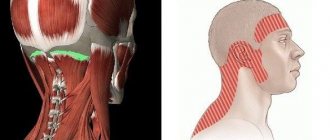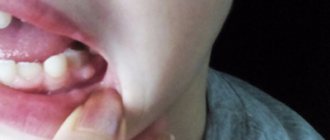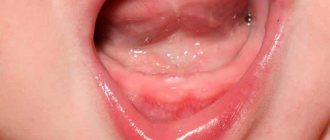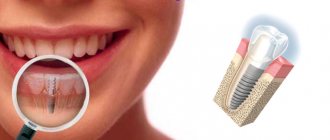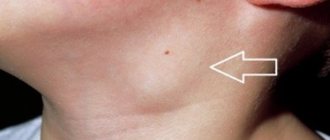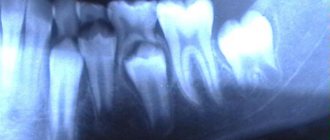Pain under the jaw: what causes unpleasant symptoms and how to eliminate them
If you have pain under your jaw, you should not ignore the unpleasant symptoms. They can talk about a number of diseases, some of which pose a serious danger to the body. Pain can also be caused by mechanical stress. When a blow occurs, you should ensure the integrity of the jaw. In any case, you need to visit a doctor. You may need to consult a dentist, surgeon, neurologist, otolaryngologist, or others. To understand which doctor is needed, it is worth analyzing the nature and location of the pain.
What could be the cause of the discomfort?
Pain under the jaw can occur on the left and right, with pressure or at rest. It can be provoked by many reasons - dental diseases, bruises, damage to nerve endings, etc. Among the most common causative factors are:
- Bruxism (teeth grinding). In some people, the anomaly manifests itself during nervous tension. But more often this disorder occurs in a dream, so a person does not even suspect that he is suffering from bruxism. In addition to wearing away tooth enamel, it can cause jaw pain.
- Dental diseases: deep caries, pulpitis, periodontitis, sialolithiasis (salivary stone pathology). More often, painful sensations appear when an infection affects the pulp. Microorganisms spread along the root canal and infect nearby tissues. This explains why my jaw hurts.
- Osteomyelitis. When the disease occurs, the infection spreads throughout the body through the bloodstream, affecting bone and soft tissue. If osteomyelitis of the jaw develops, the temporomandibular joint (TMJ) is often involved in the painful process. In this case, in addition to painful sensations, the temperature rises and the face swells.
- Neurological and vascular pathologies - for example, neuralgia, dysfunction of the heart vessels. With arteritis, when the facial artery is affected, pain begins in both jaws. The end point of the painful arc is the corner of the eye. With neuralgia of the glossopharyngeal nerve, there is severe pain under the chin when pressed or at rest. The main reason for the development of pathology is hypothermia and viral infections.
- Fracture. Possible with strong impact on the jaw. In this case, acute pain is felt, the face swells, and hemorrhage is observed. With a fracture, chewing is difficult or even impossible.
A child’s chin may hurt during the period of changing teeth. This is explained by the fact that as they grow, the nerve is pinched, which provokes unpleasant sensations. Attacks can last from a few minutes to an hour. To rule out various diseases, the child should be shown to other specialists. Difficulty cutting through the figure eight in adults can also cause a sore throat that radiates to the jaw. Pain is considered normal even after tooth extraction, especially the third molar, if it does not increase and unpleasant symptoms do not persist for more than 7 days. Otherwise, you need to consult a doctor.
Wearing orthodontic appliances also causes some discomfort. So, when using a braces system, the arch, acting on the teeth, promotes their movement. The roots put pressure on the bone tissue, which provokes a dull aching pain in the jaws at first. It happens that painful sensations are caused by excessive tension of the arch. For the unpleasant symptoms to disappear, you only need to weaken it.
Lymphatic changes as one of the causes of pain under the jaw
When discomfort occurs, it is first necessary to assess the health of the submandibular lymph nodes. It is worth excluding or confirming (if pathology is present) lymphadenitis - inflammation that develops when an infection enters the lymph nodes. The disease in its acute form is accompanied by severe pain, body temperature rises, and weakness appears. Discomfort is especially acute when pressing on a sore spot. If timely treatment is not carried out, the disease enters the chronic stage. With different forms of lymphadenitis, an abscess or phlegmon can develop - a purulent formation.
Lymph nodes can become inflamed, for example, in acute and chronic tonsillitis. In this case, it can hurt from different sides under the jaw. But other symptoms come to the fore: acute pain in the throat (especially when swallowing), purulent plaque on the tonsils, fever - even up to 40˚C.
If the lymph node in the neck hurts, this may also indicate the appearance of a neoplasm. More often these are metastases that penetrate from other organs. The nature of the pain varies. The patient has an elevated body temperature for a long time, weakness appears, and he sharply loses weight.
Painless lumps under the chin
Painless lump under the jaw on the right - what is it and why does it appear? There are several reasons for the formation of such seals, which are discussed in detail below.
Atheroma
Atheroma is a lump under the chin that does not cause pain, but causes aesthetic discomfort. This is a formation that is filled with subcutaneous sebum, drops of sweat and particles of the epidermis. It forms gradually, but grows steadily.
Note. If the atheroma under the chin in the middle hurts when pressed, this means that a secondary infection has occurred and it has become inflamed. In this case, it will be red, the skin on it will become shiny. Uninflamed atheroma is white, and, as already noted, never hurts when pressed.
Wen
A lipoma, or wen, is a lump on the neck that can be localized under the jaw on the left, right, or in any other area. This seal is benign and is formed from fatty tissue located in the subcutaneous space. Wen are capable of growing, although this process takes quite a long time. Until the lipoma has grown to a size at which it will cause obvious physical discomfort, you need to get rid of it.
Nodular goiter
Nodular goiter is an inflammatory lesion of the thyroid gland, as a result of which nodes - single or numerous - begin to form in its tissues. This is a rather serious disease, the absence of treatment of which can result in transformation into a cancerous tumor.
The nature of pain depending on the type of disease
Since various diseases can provoke discomfort, its nature will differ:
- Arthrosis. There is a constant aching pain. It is also accompanied by a crunch. If you open your mouth too much (or while chewing), the pain increases. In most cases, attacks occur in the morning.
- Migraine. With this neurological disease, pain is usually felt in the neck under the jaw on one side. It intensifies when exposed to irritants - bright light, sudden changes in lighting, loud sounds, strong odors. Other characteristic symptoms include thirst, nausea, spots in the eyes, and speech disorders. The duration of attacks is from 3 hours to 4 days.
- Angina. The disease is accompanied by pain under the jaw and in the throat. It intensifies when swallowing. Often the patient even refuses food. Painful sensations can also be felt in the ear.
- TMJ dysfunction. With pathology, pain appears in the lower jaw, in front of the ear, in the forehead and cheeks. Characteristic “clicking” sounds may occur. Sometimes there may even be a “jamming” of the jaw. The pain is characterized as prolonged, dull, muffled, becoming more acute when opening the mouth wide or chewing.
- Neuralgia of the ear node. The pain manifests itself in attacks that can last up to an hour. It radiates to the lower jaw and temple. Strengthens when pressed. The person may feel a "clicking" sensation in the ear.
- Benign tumors. In the initial stages of the disease, the patient does not notice any symptoms. Sharp pain with osteoid osteoma is felt already in advanced disease. Osteoblastoclastoma is accompanied by aching pain in the jaw. The temperature may also rise, and a pale pink growth appears on the gums. Late forms of adamantioma are characterized by sharp pain in the jaw, the intensity of which increases with chewing.
- Malignant tumors. At first, the pain is practically not felt, but after a while it will be impossible to live normally without analgesics. So, with osteogenic sarcoma, which develops in bone tissue, the pain is very strong. The attacks are prolonged.
Sharp and severe pain in the chin in some cases is the first sign of myocardial infarction and angina. The localization of unpleasant symptoms in this case is often on the left.
Mumps or mumps
With this pathology, the salivary glands located next to the ears become inflamed. If there is a lump, swelling on the jaw or a tumor under the ear, then you can suspect that it is mumps. Additional symptoms: increased body temperature, weakness, pain in the area where tumors are located and when swallowing. Mumps most often affects children and young people.
The tumor may be caused by mumps
This disease is viral and poses a danger of infection to others, so the patient must be isolated from others. It is also important to start treatment for pathology on time because in the absence of adequate measures complications may arise, the most serious of which is infertility.
Diagnosis of diseases
Even if the pain is mild at first, over time it can develop into exhaustion. Therefore, do not hesitate to visit a doctor. He will conduct an examination, collect anamnesis, prescribe x-rays and tests. For heart problems, an ECG is additionally performed. If a tumor is suspected, the examination will be more serious, since it is necessary to determine what kind of tumor (benign or malignant), the stage of the lesion, and the presence of metastases.
Taking painkillers can “blur” the clinical picture, so you should not use them without a doctor’s prescription, especially before diagnosis. Only with a correct diagnosis will the doctor be able to determine what to do to eliminate the pathology.
Features of diagnosis and therapy
What to do if a lump appears on the chin under the skin? First of all, it is necessary to discard thoughts about using independent measures to treat such a tumor. You should seek help from a doctor - endocrinologist, surgeon, oncologist - to make an accurate diagnosis.
Verification of the diagnosis is based on:
- detailed patient interview,
- inspection and, if necessary, palpation of the seal,
- Ultrasound,
- CT,
- MRI,
- general blood and urine tests,
- scintigraphy,
- analysis of venous blood for thyroid hormones.
If, during the above diagnostic procedures, it was determined that the neck under the chin is swollen due to the presence of a neoplasm, the patient is prescribed a biopsy. Only after this can the doctor proceed to develop a treatment regimen.
Basic methods of treating pathologies
Analgesics will only hide the symptoms for a while, but will not solve the problem. Therefore, it is necessary to treat the disease that causes pain. Let's give some examples.
Jaw injuries
If you are bruised, you should immediately apply a cold compress and bandage to the sore spot. You should definitely see a doctor to rule out other serious pathologies, such as a dislocation or fracture. During treatment, it is important to ensure complete rest for the jaw.
If the cause of pain is a dislocation, the jaw is set into the correct position and fixed with a bandage, which helps ensure its immobility. In case of a fracture, the traumatologist performs splinting or intermaxillary fixation. If it is open, the technique of osteosynthesis with titanium plates is used.
Treatment of osteomyelitis
The tooth involved in the painful process will have to be removed. When performing manipulations, the doctor in most cases opens a purulent focus in the bone and adjacent tissues. Incisions can be made either intraorally or extraorally. All actions are carried out under local anesthesia. After surgery, it is important to carefully clean the wounds. The doctor prescribes antibiotics, vitamins, painkillers and other necessary medications.
With bone necrosis, the doctor determines how to treat osteomyelitis based on the stage of the inflammatory process.
Treatment of TMJ dysfunction
Pathology therapy involves an integrated approach:
- the use of orthodontic techniques that involve correcting the bite;
- operation;
- “remaking” teeth or prosthetics;
- physiotherapy and acupuncture.
Treatment of sore throat
The doctor determines the treatment method depending on the degree of the disease. More often, the patient is treated at home under the supervision of a specialist. The doctor prescribes antipyretic and antiviral drugs, as well as remedies for sore throat.
Using any folk remedies without traditional treatment is a big health risk. They can only be used in some cases as an auxiliary therapy, after consulting with your doctor.
Each case is individual, and the treatment method for one patient may not help another. Therefore, in any case, it is worth contacting a specialist - a dentist or therapist, for example, and if necessary, he will refer you to another doctor.
How to relieve neck pain with osteochondrosis
For acute pain, you need to take a non-steroidal anti-inflammatory drug or use a gel or cream with an anti-inflammatory effect. You need to rub the product wherever you feel pain and numbness. If the pain intensifies when you turn your head, you should limit your movements. Do not make sudden head movements. If you have shoulder pain, do not put any weight on your arm. It is possible to use painkillers with a warming effect.
All these recommendations will help relieve pain for 1-2 days. But to prevent repeated attacks, a complete cure for osteochondrosis is necessary. Our clinic specializes in the treatment of diseases of the spine; we employ real masters of their craft. We offer both the most modern and long-proven treatment methods: Hiwamat and UVT therapy, kinesitherapy, therapeutic massage, acupuncture, osteopathy, manual therapy, taping.
